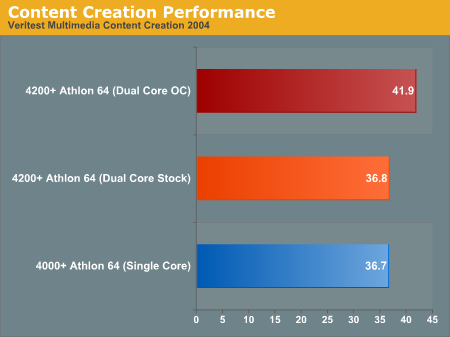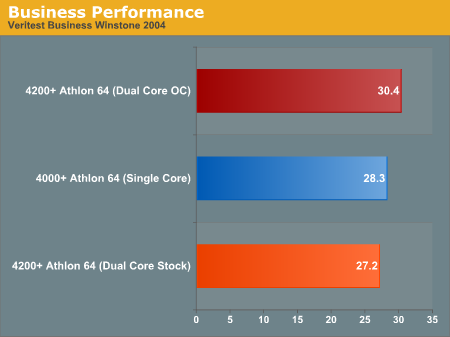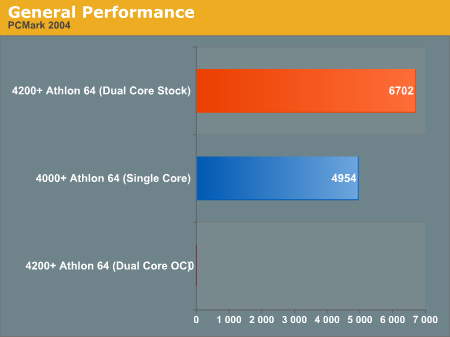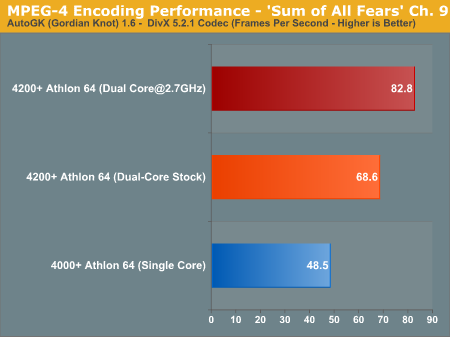General Performance and Media Encoding
Winstones follow an expected pattern with Business Winstone 2004 performing about the same as a similar speed single core CPU. Multimedia Content Creation, however, has some components which benefit from the improved multitasking of the dual-core CPU and it performs better on the dual-core processor. Both Winstones scale very well with CPU speed, so we see a sizable boost in performance at the overclocked 2.7GHz setting.


PCMark2004 is astonishingly sensitive to the multitasking advantages of the dual core 4200+. At stock speed the 4200+ outperforms the higher speed 4000+ by over 35%. PCMark2004 has performed best on the Intel platform in the past, but that advantage appears gone with the launch of the dual-core Athlon 64. We were unable, however, to get PCMark2004 to work at overclocked speeds on the X2 processor. Tests would run, but PCMark04 refused to generate a PCMark2004 score even at modest overclocks. Since Futuremark is preparing to launch PCMark2005 shortly, we suspect this anomaly will be corrected in the new version.

Our AutoGK 1.6 Media Encoding benchmark dramatically shows the impact of Dual-Core on Encoding speed. Comparing the 4200+ to the higher speed single-core 4000+ we find encoding jumps to 68.6 FPS from 48.5 on the single-core. This is a 41% performance improvement. Overclocking the 4200+ to 2.7GHz raises the encoding speed to 82.8 FPS.
Media Encoding was one area where Intel continued to enjoy a small advantage, but it certainly appears the dual-core Athlon 64 will be an excellent choice for media encoding.










53 Comments
View All Comments
Googer - Thursday, June 23, 2005 - link
Correction:This is not an Apples to Apples compairison, This article should have compaired a 90nm Venice 2.2GHz 512k to a Manchester Dual Core 512k 2.2Ghz. Why was the 4000+ used as the compairison in an overclockability aricle? It does not even come from the same die.
Googer - Thursday, June 23, 2005 - link
This is not an Apples to Apples compairison, This article should have compaired a 90nm Venice 2.2GHz 512k to a Dual Core 512k x2 2.2Ghz. Why was the 4000+ used as the compairison for overclockability aricle?Googer - Thursday, June 23, 2005 - link
Lets get First POST Cr*P out of the way